Operas for Our Time: A for Effort
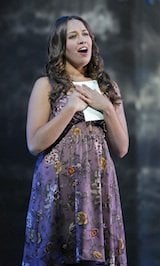 However ambiguous you may feel about the mix of history, hype, (literal) flag-waving, a huge production effort (including a dozen Merola/Adler veterans, from Thomas Hampson to Patrick Summers to such young talent as Nadine Sierra), and the possible elevation of Chris Theofanidis into a top rank of American composers, San Francisco Opera’s general director, David Gockley, deserves credit for producing Heart of a Soldier, and for what it represents.
However ambiguous you may feel about the mix of history, hype, (literal) flag-waving, a huge production effort (including a dozen Merola/Adler veterans, from Thomas Hampson to Patrick Summers to such young talent as Nadine Sierra), and the possible elevation of Chris Theofanidis into a top rank of American composers, San Francisco Opera’s general director, David Gockley, deserves credit for producing Heart of a Soldier, and for what it represents. When Heart premiered in the War Memorial Opera House Saturday night, responses ranged widely, from the evenhanded to the damning, to Jeff Dunn’s thorough one in SFCV.
Yet an important aspect of the premiere has not been emphasized: It is part of Gockley’s ongoing effort to keep opera alive through relevant content, rather than with cheap shock “values” of Eurotrash.
For at least two decades, in Houston and San Francisco, Gockley has marshaled money (during the Enron meltdown there, the Great Recession here), talent, and audiences to present operas with contemporary themes.
Among them: John Adams’ Nixon in China (1972), Carlisle Floyd’s Willie Stark (1981), Michael Daughterty’s Jackie O (1997), Jake Heggie’s The End of the Affair (2004), Stewart Wallace’s Harvey Milk (1995) and The Bonesetter’s Daughter (2008), Philip Glass’ Appomattox (2007), and many more.
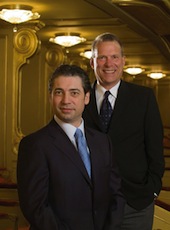
In the program notes for Heart of a Soldier, Gockley wrote about the difficult but essential connection between art and contemporary reality, emphasizing the purpose, not the problems:
On the heels of the [9/11] tragedy, the New York Philharmonic commissioned John Adams to compose On the Transmigration of Souls, a heartfelt and profound reaction to the events, at which point Adams said, ‘Music has the singular capacity to unlock people’’s imprisoned emotions, and bring us face to face with our raw uncensored, unattenuated feelings. That is why during times when we are grieving or seeking to get in touch with the core of our beings, we seek out those pieces that speak to us with that sense of gravitas and serenity.’Cataclysmic world events have inspired many great works of art. Shostakovich’’s Seventh Symphony was a response to the death and heroism of the people of Leningrad as they withstood the Nazi onslaught in World War II. Picasso’’s Guernica, Goya’’s The Disasters of War, Spielberg’’s film Schindler’s List, Fondakowski’’s play The People’’s Temple (about the Jonestown massacre), and Guterson’s book Snow Falling on Cedars (dealing with our government’s internment of Japanese Americans during World War II) are but a few examples of artists’ reactions to large-scale tragic events.
In expressing themselves in this heightened way, they not only speak for themselves, they speak for all of us, providing a communal catharsis. Even isolated tragedies inspire artistic expression, like the central movement of Christopher Rouse’s Flute Concerto, which was inspired by the abduction and murder of a two-year old English boy, ‘a small token of remembrance for an innocent life senselessly and cruelly snuffed out.’ ...
Will Heart of a Soldier be this successful? Who knows. The important thing is to get these pieces launched with fanfare and good attendance, and then they are on their own! For better or worse, my career as an opera producer has been punctuated with many of these launches. My work will be judged by the quality of the pieces I have midwifed, and in most cases I will be long gone before the juries render their ultimate verdicts.
Memorial Service for Harold Lawrence
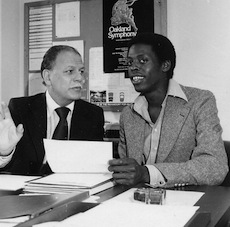 A memorial service celebrating Harold Lawrence’s life will take place on Thursday, Sept. 15, beginning at 3 p.m., in the Lake Merritt Garden Center, Oakland.
A memorial service celebrating Harold Lawrence’s life will take place on Thursday, Sept. 15, beginning at 3 p.m., in the Lake Merritt Garden Center, Oakland. The distinguished classical music recording producer and orchestra manager died on Aug. 22 at the age of 88. He began his career in the record industry as music director of the Classical Division of Mercury Records and was the first American ever appointed to head the administration of a British orchestra in 1967 when he became general manager of the London Symphony Orchestra.
Lawrence returned to his native New York in 1973 to manage the New York Philharmonic, where he became the first executive producer of the Exxon/New York Philharmonic Radio Network. In 1975, he was recruited to manage the Buffalo Philharmonic, and in 1977 Edgar Kaiser persuaded Lawrence to move west to head the Oakland Symphony. Here, he hired the young Calvin Simmons as music director, making Simmons the first African-American conductor of a major orchestra.
Lawrence served on the Oakland Arts Council, as a grants panelist for both the California Arts Council and National Endowment for the Arts, and also as a board member of the Oakland Youth Orchestra.
Michael Morgan, music director of the Oakland East Bay Symphony (successor to the Oakland Symphony), says of Lawrence:
He made many contributions to the symphony and the youth orchestra over the years, but the greatest was his vision. Having worked with such large orchestras and with so many great artists, he brought a larger world perspective to all of our discussions. Small organizations need that in order to grow. His generosity was unfailing and he always retained a tremendous enthusiasm for all the arts, particularly as they impacted young people.
Pastreich to Retire from Philharmonia Baroque
Philharmonia Baroque Board President Paul Sugarman announced on Monday that Peter Pastreich will retire as the orchestra’s executive director at the end of the year. Formerly executive director of the San Francisco Symphony for 21 years, through 1999, Pastreich took on the Philharmonia role in 2009.“After more than 50 years managing orchestras,” Pastreich said, “I am anxious to return to projects I put on hold when I joined Philharmonia Baroque, to spend more time with my family, and to live a substantial part of the year at our home in Provence.” No successor has been announced for the position.
Kronos Quartet, in Tux(!), Honored
Leah Garchik reports in Tuesday's San Francisco Chronicle:The Kronos Quartet was in Stockholm to receive the Polar Music Prize with fellow honoree Patti Smith. Concert Hall ceremonies — including tribute performances by Swedish artists — were broadcast live on Swedish TV and were followed by a banquet for 600 with more tribute performances, including "Scatter," a piece commissioned by the Barbro Osher Pro Suecia Foundation.Longtime Kronos Managing Director Janet Cowperthwaite says it was the first time she'd seen the musicians in tuxedos. More evidence the avant-garde isn't quite what it used to be; it's older: At dinner, Kronos founder David Harrington sat next to Queen Silvia, whose daughter, Crown Princess Victoria, has just announced she's pregnant with the royal family's first grandchild. Harrington showed the queen pictures of his grandchildren.
News From the War Memorial
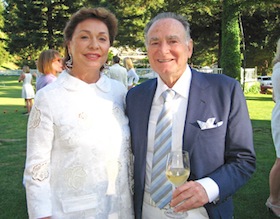 At the opening night of the San Francisco Opera’s 89th season, there were some lengthy and awkward precurtain speeches, bringing this news:
At the opening night of the San Francisco Opera’s 89th season, there were some lengthy and awkward precurtain speeches, bringing this news: - David Gockley’s tenure as general director, which started in 2006, has been extended by five years, through the 2016 season. He will be 73 then, he will have led an opera company for 44 years, and he says “that will be that” — but I doubt it. Why stop doing what you love and what you’re very, very good at? Kurt Herbert Adler was eased out of the job of intendant at age 76, and he was forcefully — if unsuccessfully — reapplying for the job seven years later, immediately before his death in 1988.
- Jan I. Shrem and Maria Manetti Farrow donated $3 million to the company to promote Italian repertory. The owner of Clos Pegase Winery and the Florence-born Napa businesswoman are also assuming the volunteer leadership role for Amici di Nicola of Camerata, supporters of Music Director Nicola Luisotti, and planning to establish the Great Interpreters of Italian Opera Fund at San Francisco Opera.
Italy and the company go back a long way, in fact to the beginning. When Gaetano Merola and a group of San Franciscans created the opera company here in 1923, every man jack of them had been born in Italy.
Long before them, in the middle of the 19th century, frequent performances by traveling companies were almost all Italian. From Kurt Herbert Adler to Terence McEwen to Lotfi Mansouri to Pamela Rosenberg to David Gockley, every intendant maintained, promoted, and often glorified the genre.
Profiling Our ‘Centennial Players’
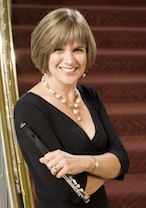 A weekly series featuring musicians of the San Francisco Symphony, performing in concerts of the orchestra’s centennial season:
A weekly series featuring musicians of the San Francisco Symphony, performing in concerts of the orchestra’s centennial season:Catherine Payne, Piccolo
Member of SFS for 15 years, Payne performed and recorded with the Boston Symphony before, as a flutist there, at Tanglewood, and the Boston Pops. She appeared on many Evening at Pops telecasts, and also served as principal flutist of the Pro Arte Chamber Orchestra of Boston.
In the 2003–2004 season, Payne performed with the Chicago Symphony Orchestra, under Daniel Barenboim, playing concerts in Chicago and Europe. Besides her music education, Payne also majored in English and graduated summa cum laude from both the New England Conservatory and Tufts.
Carey Bell, Clarinet
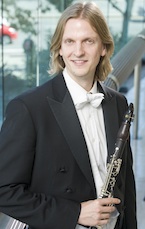
Bell is principal clarinet for SFS, occupying the William R. & Gretchen B. Kimball Chair. In addition to that exacting job, Bell also finds time to be a member of the San Francisco Contemporary Music Players and performs frequently with orchestras, chamber ensembles, and festivals across the Bay Area.
Bell has held principal positions with the San Francisco Opera Orchestra and the Syracuse Symphony Orchestra, and was acting principal clarinetist of the San Francisco Ballet Orchestra. His summer engagements have included Music@Menlo, the Oregon Bach Festival, Music in the Vineyards, the Telluride Chamber Music Festival, and the Skaneateles Music Festival.
He received degrees in performance and composition from the University of Michigan at Ann Arbor, later continuing his clarinet training at DePaul University.
San Francisco Opera on the Air
Between Chicago’s WFMT and San Francisco’s KDFC, you can listen to most San Francisco Opera productions of the past two seasons.On WFMT, at 10 a.m. Chicago time, broadcasts include The Makropulos Case, with Karita Mattila on Sept. 17; the 2011 Das Rheingold on Sept. 24; Die Walküre on Oct. 1; Siegfried on Oct. 8; and Götterdämmerung on Oct. 15.
On KDFC, the summer’s Ring cycle is broadcast at 8 p.m. Oct. 2 (Die Walküre), Nov. 6 (Siegfried), and Dec. 4 (Götterdämmerung). See the schedule for all broadcasts.
Hail Britannia
The 2011 BBC Proms came to an end Saturday, with the usual raucous, spirited “Last Night of the Proms.” Crowds spilled out from the Royal Albert Hall to nearby open venues as well as places across the U.K. through big-screen linkups.At the very end of the summer-long festival of great music presented by major orchestras and world-renown soloists, there was, as ever, Arne’s Rule Britannia, sung by Susan Bullock and the audience of some 5,000.
A bonus: Land of Hope and Glory, from Elgar’s Pomp and Circumstance March No. 1.
Music of Chuseok Among Buncheong
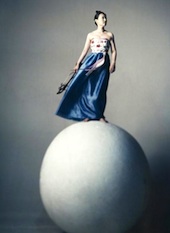 Two important aspects of Korean culture converge this weekend at San Francisco’s Asian Art Museum: a unique exhibit of buncheong ceramics (Sept. 16–Jan. 8), and the celebration of Chuseok, the festival of autumnal equinox, with a Korean Culture Day, 11 a.m.–4 p.m. on Sept. 14, with the Korea Foundation sponsoring an admission-free day to the museum, including docent tours, storytelling, food tasting, and music.
Two important aspects of Korean culture converge this weekend at San Francisco’s Asian Art Museum: a unique exhibit of buncheong ceramics (Sept. 16–Jan. 8), and the celebration of Chuseok, the festival of autumnal equinox, with a Korean Culture Day, 11 a.m.–4 p.m. on Sept. 14, with the Korea Foundation sponsoring an admission-free day to the museum, including docent tours, storytelling, food tasting, and music.Before saying more about the ceramics, here’s what to expect from the music. The visiting artist is Kang Eun Il, not only a master of the haegum (a traditional Korean string instrument, resembling a fiddle) but also the originator of “HaegumPlus,” a group that’s a forerunner of crossover music, combining traditional Korean music with nontraditional genres.
Alongside the Yoshida Brothers of Japan and the Twelve Girls Band of China, Kang Eun-Il’s HaegumPlus is emerging as one of the prominent musical groups in Asia to use indigenous instruments. Kang has performed with Bobby McFerrin, Luciano Pavarotti, NHK Orchestra, and the KBS Korean Traditional Music Orchestra. Her music has been featured on the soundtrack of movies by Korea’s most acclaimed filmmaker, Kim Ki-duk. Performances at the Asian Art Museum are scheduled for 12:30 and 3:00 p.m.
As to the exhibit, these gorgeously simple and elegant ceramics have their own music. These works of art appear amazingly ageless, making it difficult to tell apart those from the 15th century and recent creations.
Sixty-four masterworks from the Leeum Collection of the Samsung Museum of Art in Seoul are making their way to the Asian Art Museum, to be added to several vases the museum already owns.
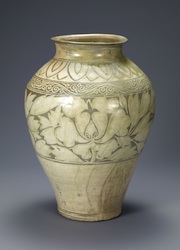
So different are these creations from other clay works that they are properly described only by their Korean name: buncheong. The word, translating to “white-slipped celadon,” describes the process of covering the ceramics with a mixture of white clay and water. That “white slip” is then decorated sparingly and always in a subtle way with flowers, animals, and geometric and abstract designs. (Celadon is a pale sea-green color; the word is also applied to porcelain or fine pottery of that tint.)
Buncheong is a contemporary term, but the art it defines dates back to the early centuries of the Joseon dynasty, which ruled from 1392 through 1910. Over the centuries, these objects served both in daily use and as art collected by royalty.
Among the buncheong treasures to be seen in San Francisco is the 600-year-old “Bottle decorated with peonies and dots,” an inlaid and stamped design. The decorative motif was etched into the clay while it was still moist, then covered with white slip before firing. Material and art both appear eminently contemporary, without any sign of its great age.
Buncheong is one of the many aspects of Korean culture “borrowed” by Japan, whose 16th-century invasion of Korea resulted in importing both ceramic art and artists to contribute through the years, even to present day, to settings of Japanese tea ceremonies.
The Oldest Musical Business: Cymbals
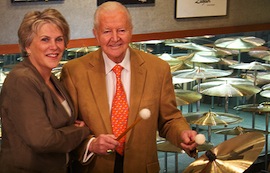 Hard to believe, but true: One of the oldest continuously existing business firms in the world is the originally Turkish (now American) Avedis Zildjian Company, which manufactures ... cymbals.
Hard to believe, but true: One of the oldest continuously existing business firms in the world is the originally Turkish (now American) Avedis Zildjian Company, which manufactures ... cymbals. Started by an alchemist in Constantinople in 1623, Zildjian has had a monopoly — with a secret process, no less — on alloys that give its cymbals extraordinary clarity and durability.
In Central Asia Minor, cymbal-making dates back to 1200 BCE, but those originated by Avedis I are more musical and powerful in their projection of sound.
Avedis was given the name of Zildjian (Zilciyân) by Sultan Osman II, the name being a compound of the Turkish words zil (cymbal), dji (maker or seller), and ian, a common suffix used in Armenian last names.
Three centuries after the company’s birth, Avedis III, his brother Puzant, and Aram Zildjian began manufacturing cymbals in Quincy, Massachusetts, where the Avedis Zildjian Co. is still operating.
Atlanta is Burning, Musicwise
Robert Spano is thinking big. His Atlanta Symphony opens the season Sept. 22 with a grand doubleheader that would befit a centennial celebration, though the orchestra was founded only in 1945.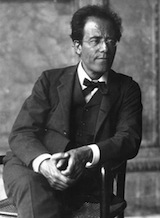
Part 1: selections from Wagner’s Der Ring des Nibelungen, with Christine Brewer, Nancy Maultsby, Vinson Cole, and Nathan Berg as soloists. Part 2: Gustav Mahler’s arrangement of Beethoven’s Symphony No. 9.
Whose what? Why would you want to arrange Beethoven for orchestra (Liszt, of course, has a piano transcription), and how would Mahler get to do that? It’s called an “expansion” of the work (something strange to do to one of the more “expansive” symphonies), involving adding extra horns and timpani and “revoicing” passages.
Mahler added some new passages and “thickened” the score. He wrote later:
Far from following any arbitrary purpose or course, but also without allowing himself to be led astray by tradition, [this conductor] was constantly and solely concerned with carrying out Beethoven’s wishes in their minutest detail, and ensuring that nothing the master intended should be sacrificed or drowned out amid the general confusion of sound.
The Atlanta season offers three world premieres, one U.S. premiere, and 14 Atlanta premieres. Recently issued recordings includes a now-familiar name for San Francisco Opera patrons: Christopher Theofanidis’s Symphony No. 1, along with the late Peter Lieberson’s Neruda Songs sung by mezzo-soprano Kelley O’Connor.
The Pre-Code Charms of Nymph Errant
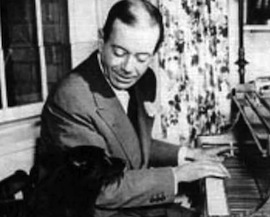 Cole Porter’s 1933 musical Nymph Errant, next on the schedule of 42nd Street Moon (Oct. 5–23), reminds company Artistic Director Greg MacKellan “of those pre-code Hollywood films of the early 1930s.”
Cole Porter’s 1933 musical Nymph Errant, next on the schedule of 42nd Street Moon (Oct. 5–23), reminds company Artistic Director Greg MacKellan “of those pre-code Hollywood films of the early 1930s.” The story of a newly graduated English schoolgirl setting off on a madcap tour of Europe has a “script that is quite frank and a bit racy, even by today’s standards,” says MacKellan. “It’s easy to see why Cole Porter loved the show, because it’s smart, naughty and terribly, terribly funny.”
Moon is presenting the original London version of the musical, which starred Gertrude Lawrence. MacKellan directs, Dave Dobrusky musical directs, and Lee Ann Payne choreographs the show with music and lyrics by Porter and a book by Romney Brent, based on James Laver’s novel. The Porter songs include “The Physician,” “Experiment,” “How Could We Be Wrong?,” and “It’s Bad for Me.”
Starring as Evangeline, the post–finishing school traveler, will be Sharon Rietkerk, last seen as Anne Draper in Moon’s Strike Up the Band. All other cast members will play multiple roles with a variety of exotic backgrounds ranging from Russian and French, to Italian, Turkish, Spanish, and Hungarian.
Moon’s 2011–2012 season will continue with Oh, Kay!, Three Sisters, Sugar, and Zorba.
California Arts Council Grants
No fewer than 135 arts organizations receive $1 million in grants from the California Arts Council’s its Artists in Schools program, supporting K-12 arts education programs in schools throughout the state. Here are just a few local examples:- Alameda County Arts Commission (Oakland), to support the visual and language arts education program at the Butler Academic Center that serves incarcerated youth ages 12–18 at Alameda County Juvenile Justice Center in San Leandro.
- ArtSpan (San Francisco), to continue programming at the largely low-income Bessie Carmichael Elementary Schools and to expand ArtSpan programs to Buena Vista Elementary School of the Art for City Youth Program.
- Asian Improv aRts (San Francisco), to support residencies at Alice Fong Yu Alternative, Clarendon Japanese Bilingual Bicultural Program, and Redding Elementary in which artists focus on music, dance and visual arts in in-school and after-school programs.
- Berkeley Symphony (Berkeley), to support the partnership of Thousand Oaks Elementary, Rosa Parks Elementary, Emerson Elementary, and Washington Elementary with the Music in Schools Program.
- Blue Bear School of Music (San Francisco), to continue the after-school program in music collaboration with the STAR Program, Studio 101, which provides equipment, materials and in-depth instruction in composition, recording, and editing of music at Ida B. Wells High School, International Studies Academy, and Abraham Lincoln High School.
- Cantare Con Vivo (Oakland), to bring free weekly choral-music education to students at Lincoln Elementary, Cleveland Elementary, Melrose Leadership Academy, and Lafayette Elementary. The artists-in-residence will work with teachers to bring quality music education to K–2 classrooms.
- Chinese Cultural Productions (San Francisco), to support the organization’s after-school arts education programs at R. L. Stevenson Elementary, John Yehall Chin Elementary, and Francis Scott Key Elementary. Instructors provide weekly classes in traditional Chinese dance that will culminate in an on-site public performance.
- Crowden Music Center (Berkeley), to continue to bring a comprehensive music education program to Washington Elementary School’s K–2 students. The program will be in the form of in-school music classes taught by experienced musicians, performers, and music educators.
- Destiny Arts Center (Oakland), to provide K–6 students at Santa Fe Elementary with a 30-week dance residency in the instruction of African and Diaspora dance forms.
More next week.
